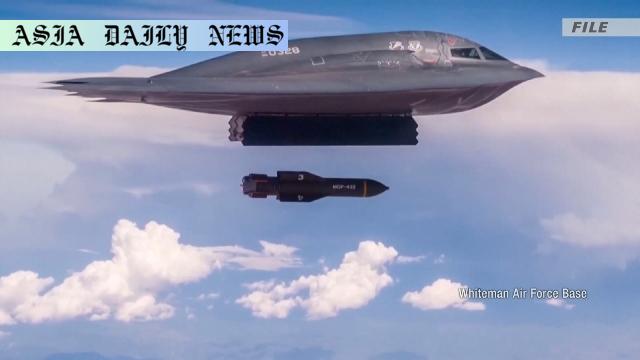US airstrikes targeted Iran’s nuclear facilities but the early assessment suggests they caused minimal long-term damage.

Overview of US Airstrikes on Iranian Targets
The recent US airstrikes on Iran’s nuclear facilities dominated headlines, with claims of decisive action to curtail Iran’s nuclear ambitions. On Sunday, the US deployed ground-penetrating munitions, referred to as ‘bunker buster bombs,’ along with Tomahawk missiles. These targeted three major Iranian nuclear facilities. While the action initially appeared to deliver a significant blow, critical analysis tells a different story. An early assessment from the US Defense Intelligence Agency suggests that the strikes might not have had the dramatic impact initially proclaimed by the administration. This revelation opens up discussions about the efficacy of such military actions and their long-term consequences.
Minimal Impact on Iran’s Nuclear Capabilities
The assessment indicates that core components of Iran’s nuclear program, such as its stockpile of enriched uranium and key centrifuges, remain largely intact. This suggests that the strikes, while demonstrating military prowess, only temporarily delayed Iran’s progress by a few months. This finding sharply contrasts with President Donald Trump’s assertion that the facilities were “totally obliterated.” This discrepancy underscores a growing debate between the administration’s narrative and intelligence community reports, leading to questions about transparency and the effectiveness of the military strategy.
Political Implications and Public Reactions
The fallout of these revelations is as much political as it is strategic. White House Press Secretary Karoline Leavitt dismissed the intelligence assessment as “flat-out wrong,” defending the administration’s statements and decisions. However, the divergence in perspectives between key leadership and the intelligence community raises concerns about trust in government communication. This also complicates negotiations and diplomatic engagements with foreign allies and adversaries, who may view these actions as an escalation rather than a solution. For the American public, the difference between the administration’s bold claims and the intelligence findings creates room for skepticism and debate, further polarizing opinions on foreign policy decisions.
Historical Context of Military Interventions
Looking at history, airstrikes and other military interventions often serve as tools to signal strength rather than create lasting, measurable changes on the ground. For years, nations have employed such tactics to hinder adversaries’ objectives temporarily, but long-term solutions require sustained diplomacy and strategy. The US-Iran relationship, fraught with tension over nuclear ambitions, has seen numerous highs and lows. This latest chapter illustrates how military actions, although impactful in the short term, rarely change the broader trajectory without addressing underlying political or ideological differences. The strikes have once again highlighted the need for comprehensive and coordinated policy approaches rather than reliance on force alone.
Future Considerations for US Policy
In light of these developments, the US must reassess its approach to handling Iran’s nuclear program. While showcasing military capability is vital in maintaining strategic deterrence, over-reliance on such methods without clear follow-up plans diminishes their effectiveness. A broader, globally coordinated effort involving diplomacy, economic sanctions, and incentives could prove more sustainable and impactful. Furthermore, transparent communication between intelligence agencies and policymakers is critical to align strategies and manage public perception effectively. With Iran likely to rebuild and continue its nuclear pursuits, the importance of crafting nuanced policies that address all facets of this complex issue cannot be understated.
Commentary
Reflecting on the Efficacy of the US Airstrikes
The recent airstrikes targeting Iran’s nuclear facilities bring up important questions about the effectiveness of such actions in achieving long-term objectives. While the use of advanced munitions and precision strikes showcases America’s military strength, it also highlights the limitations of purely tactical solutions in addressing strategic challenges. Targeting infrastructure does not dismantle the knowledge and intent driving Iran’s nuclear ambitions. This leaves one wondering whether the resources used in such operations could have been directed towards fostering stronger diplomatic efforts.
Political Narratives Versus Intelligence Realities
The evident discrepancy between President Trump’s statements and the intelligence assessment is a point of concern. Political leaders often project confident and sometimes exaggerated narratives to rally public support, but this can backfire when facts emerge that contest those claims. In this case, it seems the administration’s description of “total obliteration” is far from reality, which could erode trust in leadership. It also raises ethical questions about the alignment of military strategies with truthful public communication about their actual impact.
The Importance of Multilateral Cooperation and Diplomacy
As we examine the strategic implications of these strikes, the path forward becomes increasingly clear: military actions alone will not resolve the nuclear tension between the US and Iran. What is needed is a global multilateral effort involving key players in the region and beyond. This would not only put pressure on Iran but also offer constructive paths toward resolution. Trade agreements, incentivized sanctions, and mutual trust-building measures are tools that must complement any military strategy to achieve lasting peace in the region. The US must also work to bridge domestic divisions on foreign policy and project a unified stance on global platforms.


